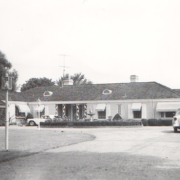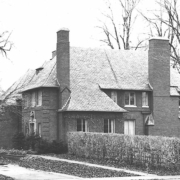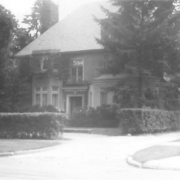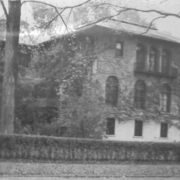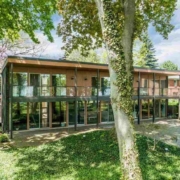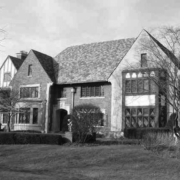Historical Architecture of Grosse Pointe – The Yacht Club 1
Last week we covered the story of the Grosse Pointe Club, designed by prominent Grosse Pointe architect Robert O. Derrick. Affectionately known as the “Little Club” the clubhouse officially opened in January 1927, at 6 Berkshire Place on the shores of Lake St. Clair. This week we continue with the theme of clubs in Grosse Pointe as we pay a visit to the Grosse Pointe Yacht Club, located at 788 Lake Shore Road in Grosse Pointe Shores. In part one of our two-part series, we look at when the club was formed, the architect, and the costs associated with building the clubhouse.
The Grosse Pointe Yacht Club was originally founded in 1914, by a group of sailing and iceboating enthusiasts. In its early days it is widely acknowledged the focus of the clubs’ members was on ice boating rather than sailing. Winners of ice boat races would win prizes such as leather gloves, buckskin mittens, and sweater coats. Source: ‘Tonnancour Volume 2: A Beacon of Tradition: The Building of the Grosse Pointe Yacht Club.’ By James P. Gallagher.
During the 1920’s the number of members at the club was beginning to grow, thanks in part to the significant growth of Grosse Pointe, which had become fully established as a thriving community. As with many of the clubs in Grosse Pointe during the 1920’s the need for expansion and a more significant club house was evident from the ever-increasing membership. In the case of the Grosse Pointe Yacht Club 1926 was a significant year – it is reported “the building committee accepted an offer by member Clarence L. Ayres of a parcel of land at the southwest comer of Lakeshore Road and Vernier, including the lake frontage and the associated riparian rights, for a total price of $28,000 (around $471,000 today).” “At the same time the club leased the adjoining land from the Village, consisting of 90ft along the lake and 325ft back from the shoreline.” “The lease was originally for 30 years but has since been renewed multiple times.” Source: ‘Tonnancour Volume 2: A Beacon of Tradition: The Building of the Grosse Pointe Yacht Club.’ By James P. Gallagher. During this period of growth at the club Edsel B. Ford was the Commodore. It was stipulated (as part of their lease agreement) the clubhouse needed to be completed within two years with a budget of $200,000 (around $3.3m today). This also included land improvements. It is reported members of the club wanted a building that would be grander than anything along Lake St Clair and one that would compare with the two older clubs on Belle Isle (the Detroit Boat Club and the Detroit Yacht Club). Enter Boston architect and Harvard College graduate Guy Lowell to grant their wish. Lowell was hired by the board on January 17, 1927.
Guy Lowell, born in 1870, was a renowned architect and by 1906 he had opened offices in New York and Boston, splitting his time between the two cities. His commissions included large public, academic and commercial buildings, along with many distinctive residences, country estates, and formal gardens. Lowell was also a leading yachtsman. Sadly, 18 days after submitting sketches to the board of the yacht club Guy Lowell tragically died at sea on February 4, 1927, off the Spanish Madeira Islands, in the Atlantic Ocean.
After Lowell’s untimely death it is acknowledged the sketches were completed by two of Lowell’s senior associates Ralph Coolidge Henry and Henry P. Richmond. The duo subsequently formed the architectural firm of Henry and Richmond who worked directly with the board of the yacht club. Image courtesy of: ‘Tonnancour Volume 2: A Beacon of Tradition: The Building of the Grosse Pointe Yacht Club.’ By James P. Gallagher.
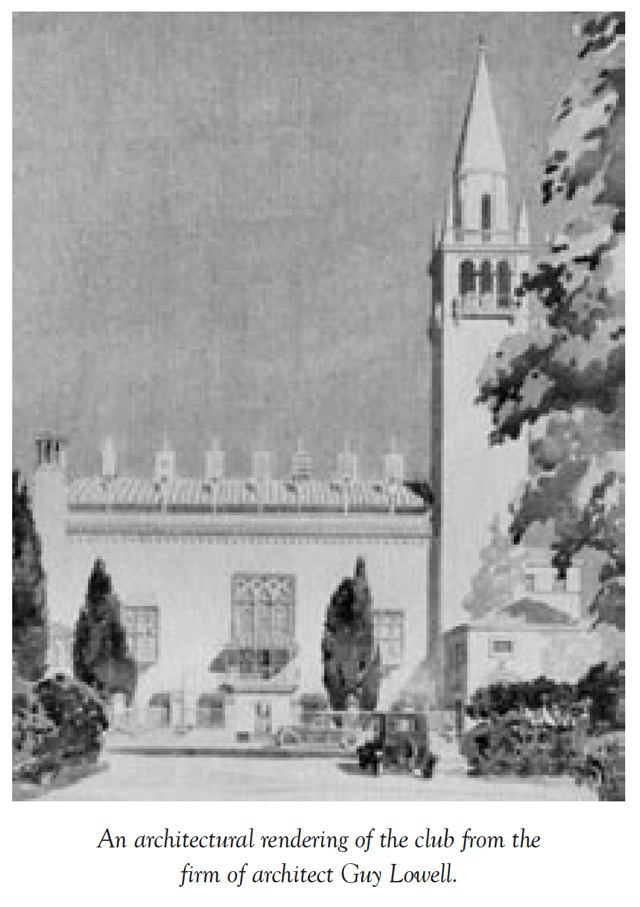
Prior to construction it was reported bids to build the club were coming in more than double from the original estimates. “Instructions were given to the architects to scale back the design to get costs down to around $350,000 (around $5.9m today).” “In February 1928, further bids were obtained, the low bidder was the Corrick Brothers Company, who offered a price of $380,000, plus a $20,000 fee.” “Minutes from a meeting around that time state the first payment of architectural fees was $35,000.” Source: ‘Tonnancour Volume 2.’ Despite the spiraling costs construction began. In June 1928, the harbor was opened for use. The outer harbor measured 450’ x 550’, at the time it was one of the largest protected harbors for small boats on Lake St. Clair. Boaters using the new harbor were able to gain a glimpse of the stunning clubhouse that was being built, including the 187-foot tower that would be become one of the most iconic sites on the lake. Image courtesy of thehenryford.org and Wayne State University Digital Collection (June 1929)

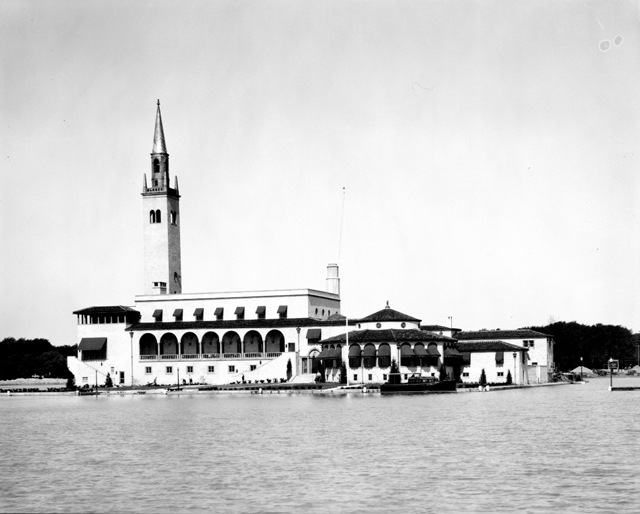
On July 4, 1929, the Grosse Pointe Yacht Club opened to much funfair. Prior to the opening invitations were sent to members and selected guests. It was a lavish occasion which included a sailing regatta (with 12 classes) and a program of events including a swimming championship, contested in the inner harbor, where diving, and water polo also took place. A buffet luncheon was served in the new clubhouse while a Hawaiian orchestra played on the veranda during the afternoon. In the evening, dinner was followed by bridge and finally fireworks rounded off the celebrations. Source: Detroit Free Press, July 1929. Images are courtesy of: Wayne State University Digital Collection (June and July 1929). And the Detroit Free Press July 6, 1929.

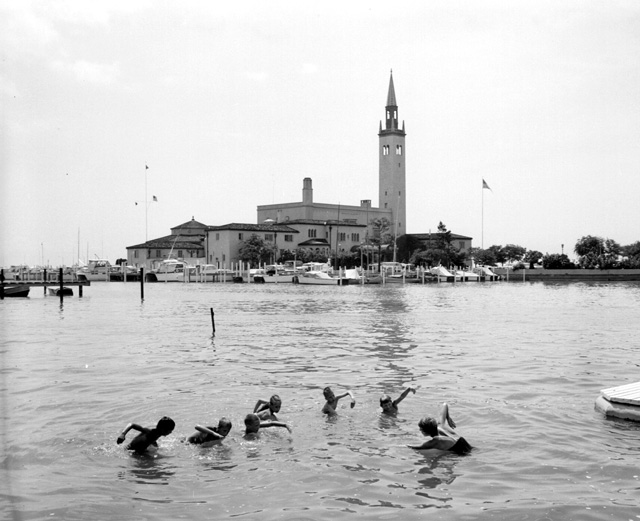
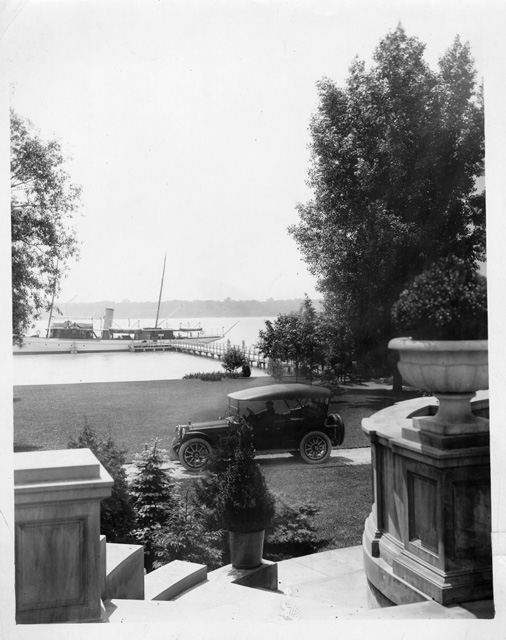
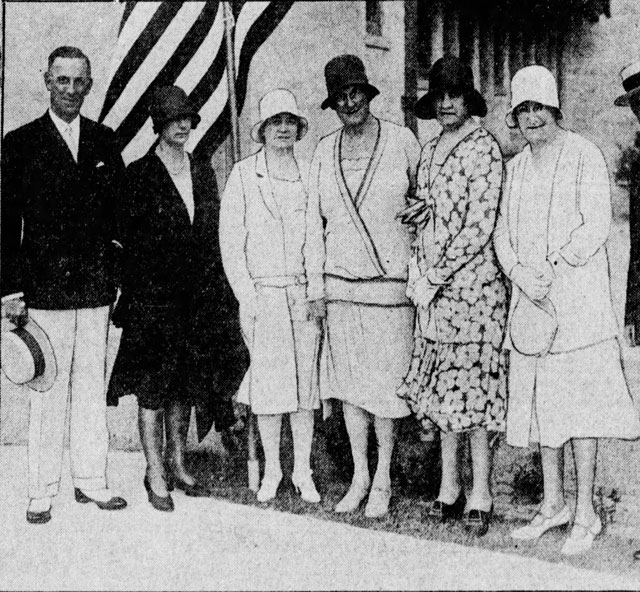
The club was luxurious – the long driveway, Italianate gardens, and the spectacular Italian-Renaissance style clubhouse welcomed members to what was one of the finest private clubs in the country. However, the grand building had come at a huge cost. It was reported in the Grosse Pointe Civic News (August 1929), the cost of constructing the Grosse Pointe Yacht Club was well over half-million dollars. During the early fall of 1929, three months after the grand opening, it was reported “the total of the loans taken out by the club for the construction project had reached $740,000, including fees to the builder of $458,757.” Source: ‘Tonnancour Volume 2.’ On October 24, 1929, the great crash happened, called Black Thursday, the day of the largest sell-off of shares in U.S. history that signaled the beginning of the Great Depression. It was reported the board and the members somehow managed to keep the club afloat for a while, however, the loans taken out to build the club proved to be too much, partly due to many of the members no longer being able to afford their dues. With new members not forthcoming, the banks foreclosed. Image is courtesy of: Wayne State University Digital Collection.
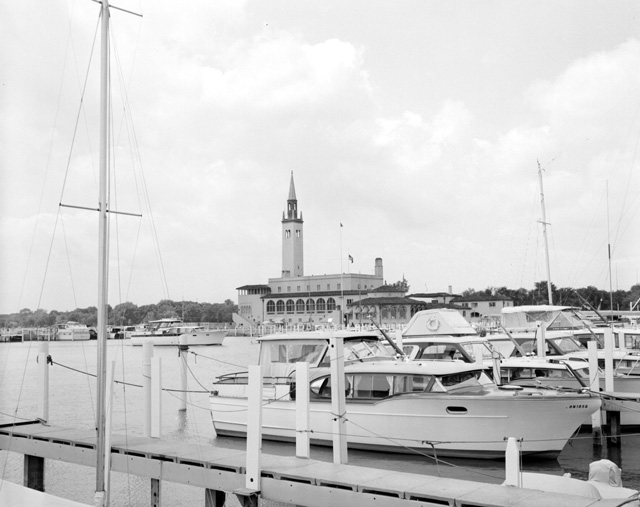
As the economy recovered the Grosse Pointe Yacht Club was purchased back (from the creditors) by a new group of officers. With a new board in place the club retained control and operations commenced. The new era of the Grosse Pointe Yacht Club had begun, welcoming new families and guests to enjoy the fabulous facility it had designed to be – one of the finest yacht clubs in America.
In part two we focus on the design of the club house, from the ornate exterior to the splendid interior.
*Photos courtesy of the Higbie Maxon Agney archives unless stated.
** Research, information, and data sources are deemed reliable, but accuracy cannot be fully guaranteed.
Written by Katie Doelle
Copyright © 2023 Katie Doelle



